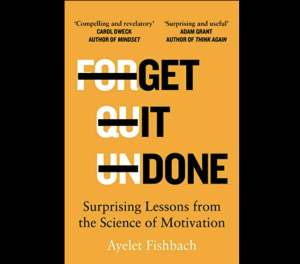 Over the last few months, I have been working with a student who is retaking a class for a third time, not failing because the material was difficult for her but because she just could not get herself to progress. This is a pattern in college and life for her. She expresses a strong desire to succeed but struggles to muster the motivation needed to stay on track. Often, she begins a course or class projects with great intentions but finds her motivation waning over time. She even sets clear goals and then watches them sit on her desk. The recurring message she receives from others (and increasingly from herself) has been perhaps that she doesn’t want it badly enough, but when she self-reflects, this is a sentiment she vehemently disagrees with. She wants it with all her heart, and it brings her to tears but has been lost on how to move from “want” to “motivated.”
Over the last few months, I have been working with a student who is retaking a class for a third time, not failing because the material was difficult for her but because she just could not get herself to progress. This is a pattern in college and life for her. She expresses a strong desire to succeed but struggles to muster the motivation needed to stay on track. Often, she begins a course or class projects with great intentions but finds her motivation waning over time. She even sets clear goals and then watches them sit on her desk. The recurring message she receives from others (and increasingly from herself) has been perhaps that she doesn’t want it badly enough, but when she self-reflects, this is a sentiment she vehemently disagrees with. She wants it with all her heart, and it brings her to tears but has been lost on how to move from “want” to “motivated.”
While engaging with her I began to read Get It Done: Surprising Lessons from the Science of Motivation by Ayelet Fishbach. And wow what a timely read! Unlike traditional productivity books, Fishbach delves into the science of motivation and offers insights on how to bridge the gap between wanting to do something and actually accomplishing it.
Engaging in discussions with my student about goal-setting and goal-sustaining advice from this book appears to have breathed new life into her journey. She has begun to see motivation as a skill that can be cultivated and is enthusiastic about doing so, especially within a social context of both our classroom interactions as well as working with her family. Importantly this enthusiasm is sustained. This experience has led me to view this book not only as a valuable self-help resource but also as a tool to assist others. Instead of dictating what individuals should do, it equips you with the scaffolding necessary to guide conversations with yourself and others that can support self-actualization.
The book’s first three parts primarily focus on three key ingredients for improving your drive to accomplish projects, not just mechanically getting lists of tasks done. Firstly, Fishbach provides guidance on articulating your goals effectively, ensuring that they serve as a driving force not just an artifact. Secondly, she addresses the challenge of maintaining motivation throughout the journey towards your goals. Lastly, she emphasizes the interconnectedness of our goals within the context of our busy lives and offers essential strategies to manage multiple goals.
She highlights the importance of recognizing that goal achievement is not solely an individual endeavor, but something influenced by our interactions with others. By harnessing these social connections, you can propel yourself forward and, in turn, help those around you. In the fourth section of the book Fishbach promotes the idea that goal-setting is a collaborative effort that can strengthen relationships. Through great stores and points of discussion, she equips readers with tools to become better mentors to their students or support systems for their families.
As a productivity book, this is also an easy read. While the insights are original and grounded in scientific research, these stories are informative, enjoyable, and brief. Any good productivity book should be a quick easy read from which you can extract useful tips and understand why you are about to embark on the suggestions offered, not a long drawn-out process that becomes another difficult goal to attain. While succeeding in this regard, this book is also hugely helpful to complement any other productivity methodology demonstrating that goals are not only things that need to get done but they add meaning to our lives, something often missed in other books.
In a world where people often feel disconnected, “Get It Done” serves as a valuable guide to socializing the practice of setting and achieving goals. It not only helps you enhance your self-control, patience, and mindset but also encourages a sense of community and shared purpose in pursuing meaningful goals.



